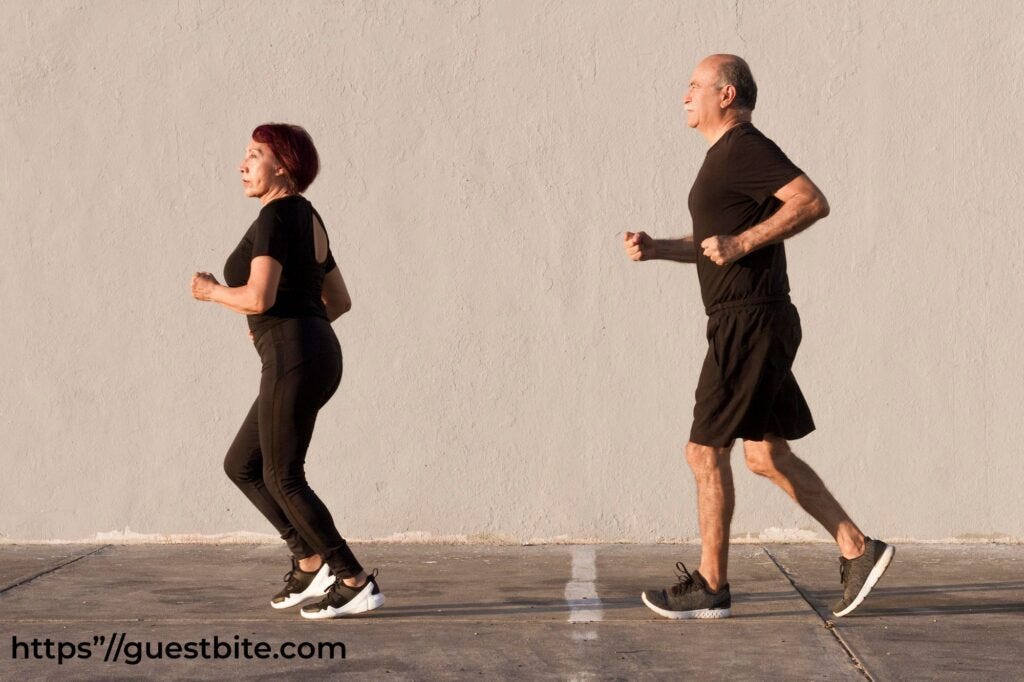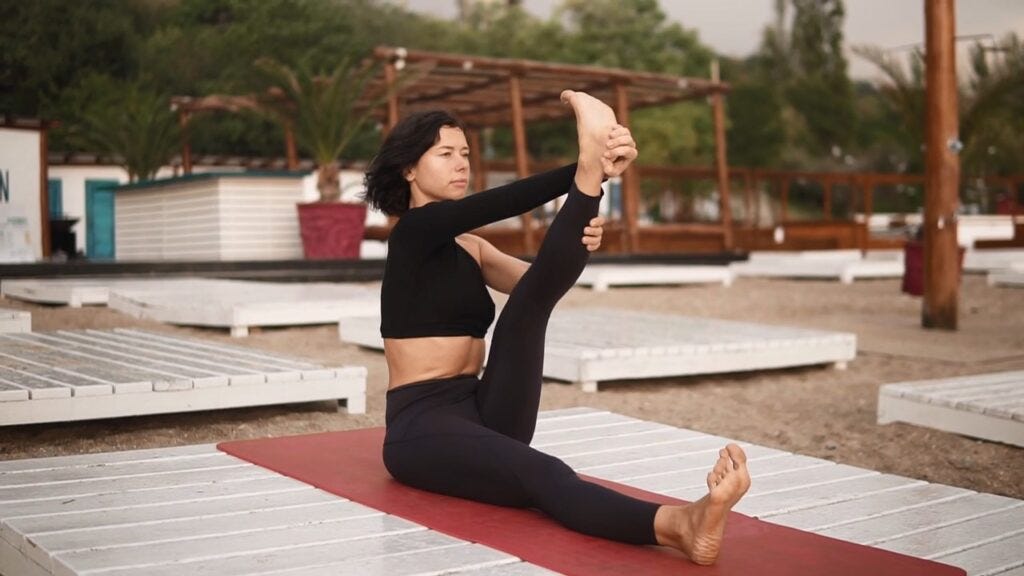Exercise is important at every stage of life, but for older adults, it is especially crucial for maintaining independence and enjoying other health benefits. When it comes to choosing the right exercises for seniors, it is important to have a variety of activities. Seniors should focus on strength and mobility exercises, as well as balance exercises. However, the most effective exercises for seniors are the ones they enjoy and will continue to do regularly.
Why Exercise Matters for Seniors
Exercise is important for older adults (age 50+) because it helps them perform everyday activities more easily, such as eating, bathing, dressing, and moving around. According to the U.S. Department of Health and Human Services, being physically active also reduces the risk of falling and suffering serious injuries.
Additionally, exercise improves muscle strength and bone density, which is especially important for men and women who lose bone density more rapidly after menopause. Furthermore, exercise benefits the heart and lungs, promoting overall health and reducing the risk of chronic illnesses and disease.
Best Exercises for Seniors
As we age, staying active becomes increasingly important for maintaining physical and mental health. Engaging in regular exercise not only helps seniors maintain independence but also enhances their quality of life.
Here are some of the best exercises for seniors:
Walking:

Walking is one of the best forms of exercise for older adults and can be modified to match the pace, distance, or time that feels right for the individual. and Regular brisk walking helps maintain a healthy weight, reduce body fat, and manage weight-related conditions Walking improves cardiovascular fitness, enhancing heart health and circulation It aids in preventing or managing various health conditions, such as heart disease, stroke, high blood pressure, It strengthens bones and muscles, improving overall muscle endurance For individuals with diabetes, walking can help lower blood sugar levels and manage weight, although caution is advised for those with diabetes-related nerve damage.
Cycling:

Cycling, whether outdoors or on a stationary bike, is a low-impact exercise that improves cardiovascular health and leg strength.Exercise is beneficial for the heart and lungs, and the body adapts by increasing its capacity to handle the added load and making the exercise beneficial for the heart and lungs.
Balance and Flexibility Exercises:

Balance and flexibility exercises are essential for preventing falls and maintaining mobility. Seniors can practice standing on one leg, heel-to-toe walking, and gentle stretching exercises to improve balance and flexibility. Incorporating balance challenges into daily activities, such as standing on one leg while brushing teeth, can also be beneficial.
Dancing:

Dancing is a great form of cardio exercise, whether you enjoy Zomba, line dancing, or tango. Moving your body, including your hips, while dancing continuously can elevate your heart rate and improve your balance. It also strengthens large muscle groups and can improve your mood. Dancing with a partner or in a group can also provide a social and physical workout.
Tai Chi:

Tai chi is a Chinese martial art that involves both movement and relaxation, making it beneficial for both the body and mind. It is often referred to as “meditation in motion” because of its calming and meditative effects. The practice consists of a series of flowing and graceful movements that transition smoothly from one to the next. Tai chi classes are available at various levels, making it accessible to people of all ages and fitness levels. It is particularly beneficial for older individuals as it helps improve balance, which is important for overall fitness and is often lost with age. To get started with tai chi, it is recommended to take a class to learn the proper form. These classes can be found at local YMCA’s, health clubs, community centres, or senior centres.
Gentle Yoga:

Yoga offers numerous benefits for seniors, including improved flexibility, muscle strength, and stress reduction. Gentle yoga classes focus on slow, controlled movements and emphasize proper alignment and breathing techniques. Seniors can modify poses to accommodate individual needs and physical limitations.
Nature walks:

Embarking on a nature walk is not merely an exercise for the body but a nourishment for the soul. Each step taken amidst the sprawling expanse of nature’s wonders becomes a gesture of gratitude to the earth and a celebration of life’s abundance. The rhythmic cadence of walking in sync with the earth beneath one’s feet invigorates both body and mind, invigorating muscles and stimulating the senses. With each ascent over rolling hills or descent into verdant valleys, the heart beats in harmony with the natural world, pulsating with the vitality of the surrounding landscape. As limbs stretch and lungs expand to inhale the crisp, untainted air, the very act of walking becomes a testament to the enduring bond between humanity and the great outdoors. In this fusion of exercise and communion with nature,
Safety Considerations
As people get older, some physical activities may not be safe or suitable for them, especially those over the age of 65. Activities that require a lot of physical effort, such as long-distance running, abdominal crunches, rock climbing, and swimming, should be avoided. It’s important to talk to your healthcare provider before starting any new physical exercise to make sure it’s safe for you.
Best Strength Training Exercises for Seniors
As you get older, certain changes in your body, such as reduced muscle and bone mass, are unavoidable. However, staying strong and active can help delay these changes to some extent. Regular resistance training can be achieved using your body weight, free weights, and resistance bands.
When choosing the best strength training exercises for seniors, it’s important to consider activities that are necessary for daily living. For example, the ability to stand up from a chair without using your hands is a good indicator of overall health. To work on this skill, it’s important to practice it regularly as well as incorporate specific strength exercises into your routine.
Sit-to-Stand Exercise for Seniors

Sit-to-stand exercise is vital for senior mobility, as it strengthens leg, core, and back muscles, aiding in increased independence and balance.It serves as a functional exercise, mimicking movements necessary for daily activities like getting out of chairs and climbing stairs To perform the exercise, sit up tall in a chair with feet shoulder-width apart, shuffle to the front of the chair, and position heels behind knees. Use chair arms or hands for support if needed Sit-to-stand exercises enhance muscle strength crucial for everyday tasks and improve balance, reducing fall risks for seniors
Positioning:
Start Position: Begin by sitting on a sturdy chair with your feet flat on the floor, hip-width apart. Keep your back straight and engage your core muscles for stability.
Foot Placement: Ensure that your feet are positioned directly under your knees for optimal support and balance.
Hand Placement: Place your hands on the armrests of the chair or on your thighs, whichever is more comfortable and allows you to maintain balance.Shift your weight forward slightly as you lean your upper body forward, keeping your back straight. Engage your leg muscles and glutes as you prepare to stand up.
Conclusion
Regardless of age, exercise is key to maintaining lifelong health and vitality. By choosing activities to suit individual preferences, abilities, and life stages, people of all ages can enjoy the physical, mental, and emotional benefits of regular exercise. Whether it’s playing tag on the playground, hitting the gym for a HIT workout, or taking a leisurely walk in nature, the best exercise is one that brings joy and fulfilment while promoting overall well-being. Is.

